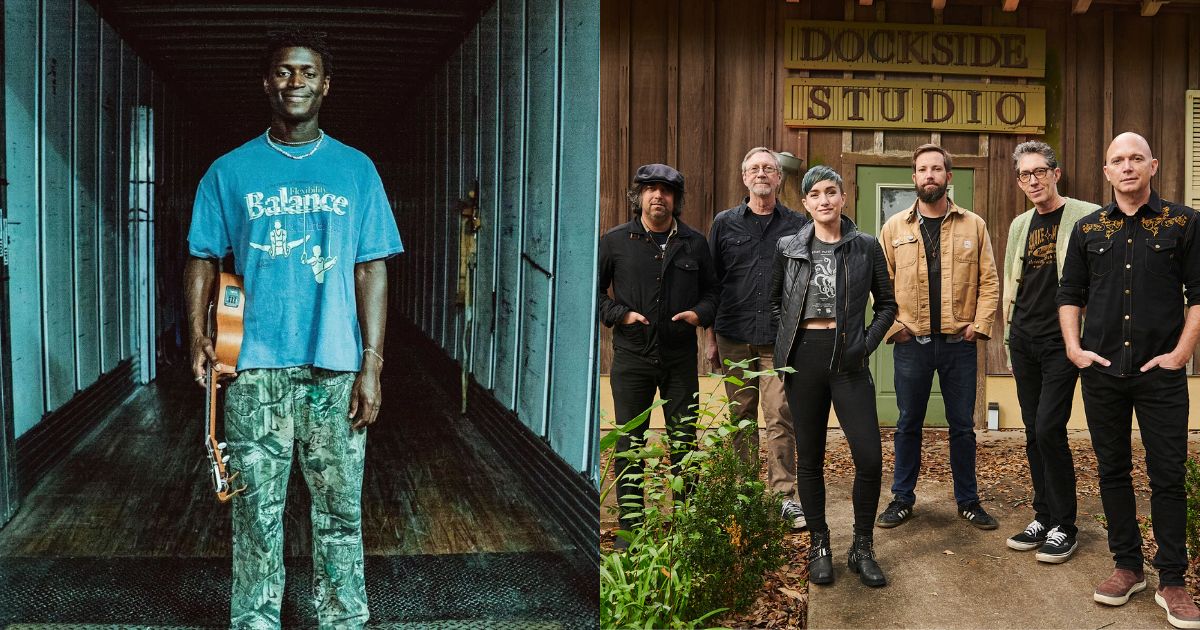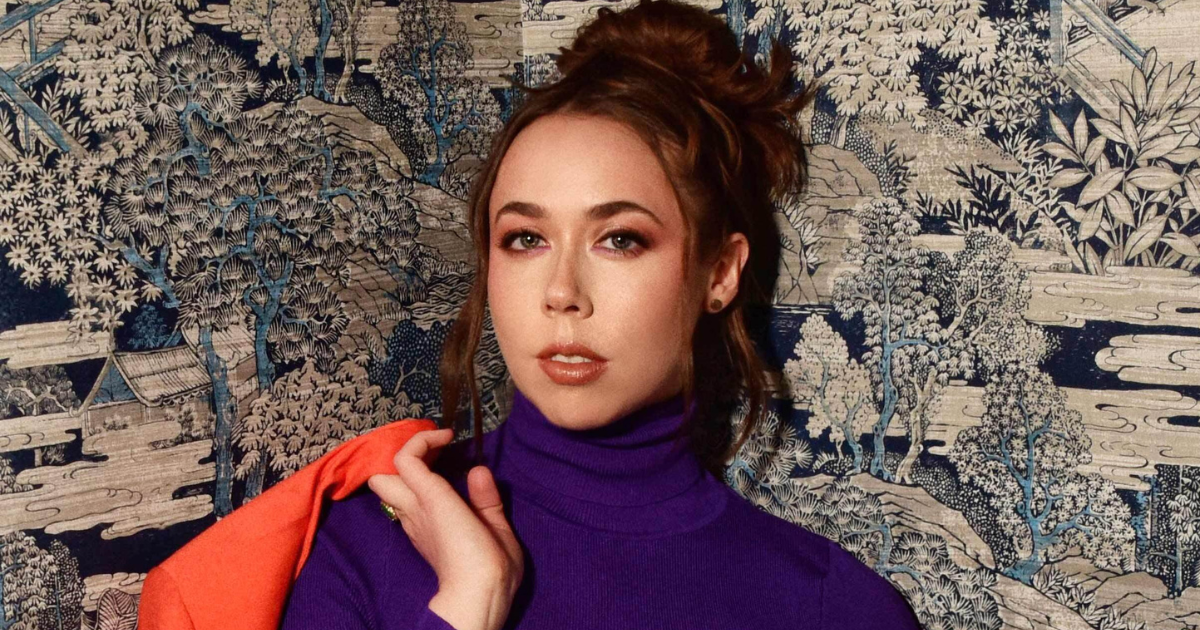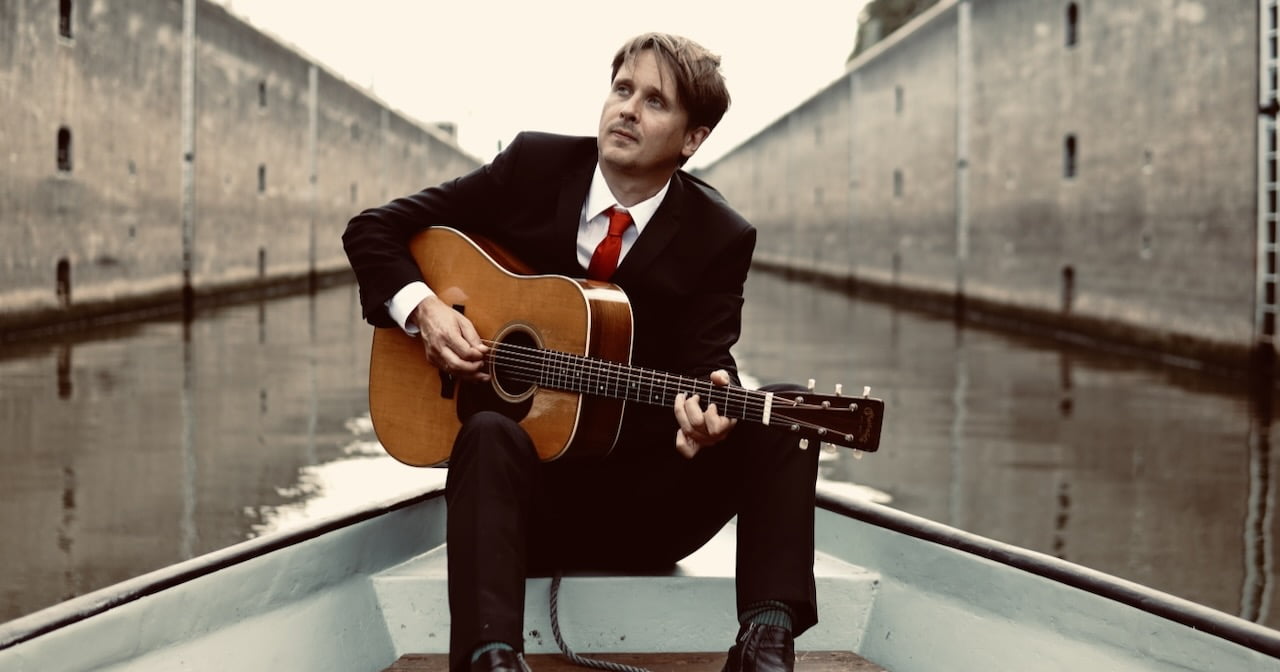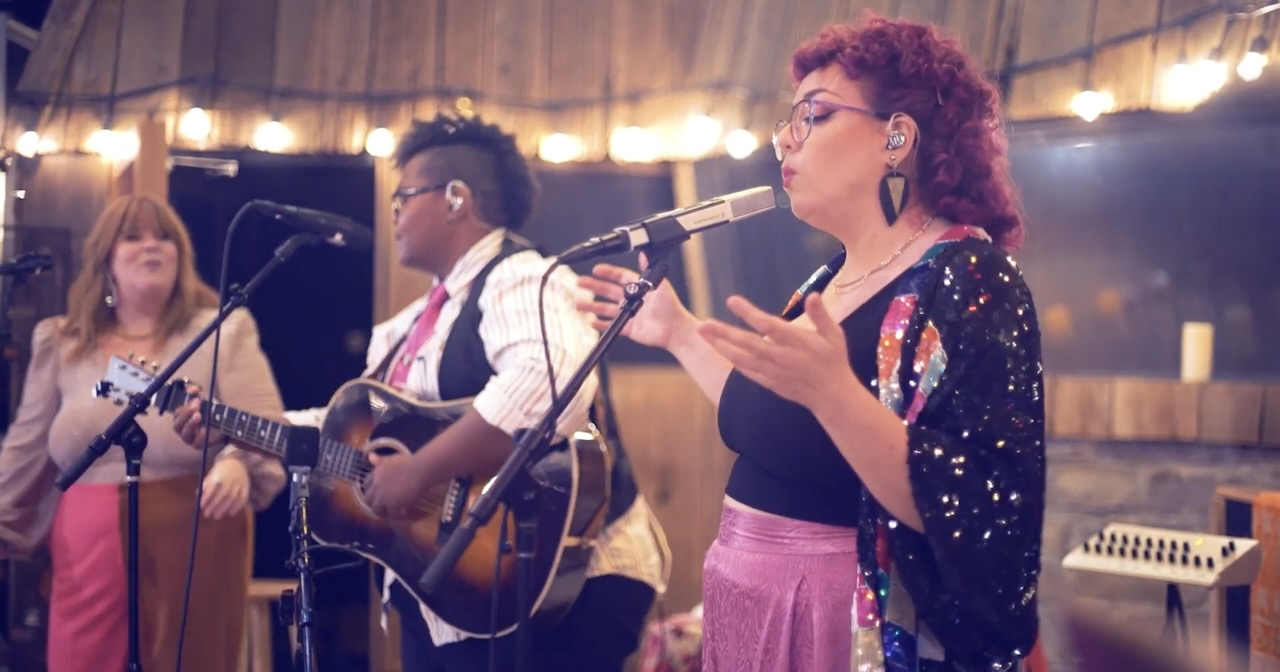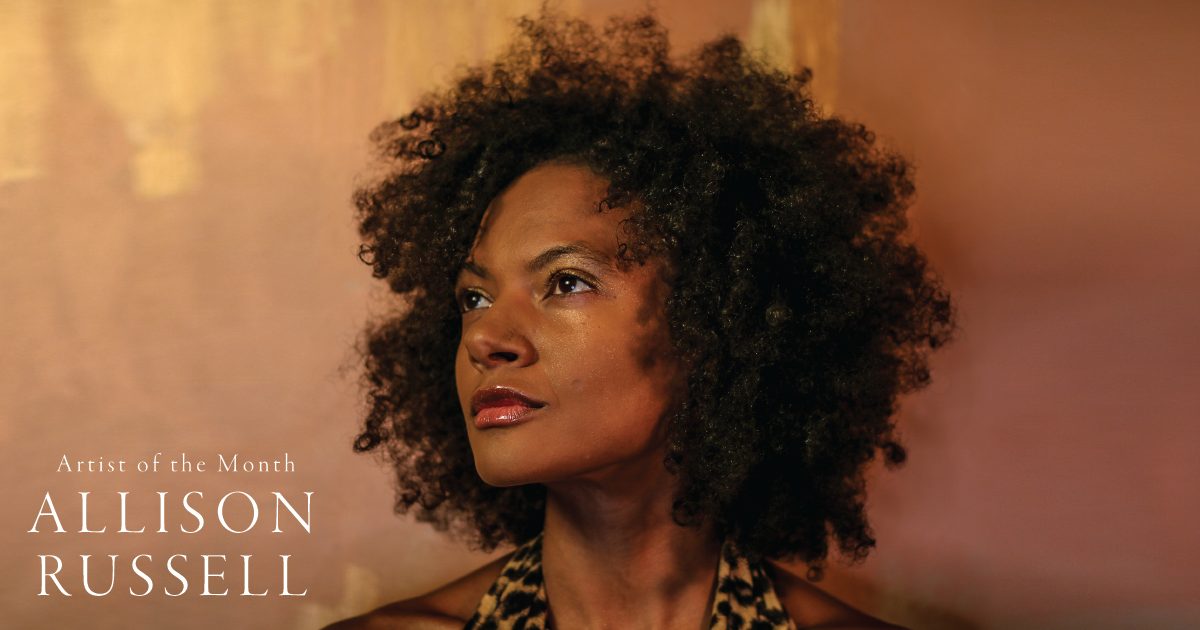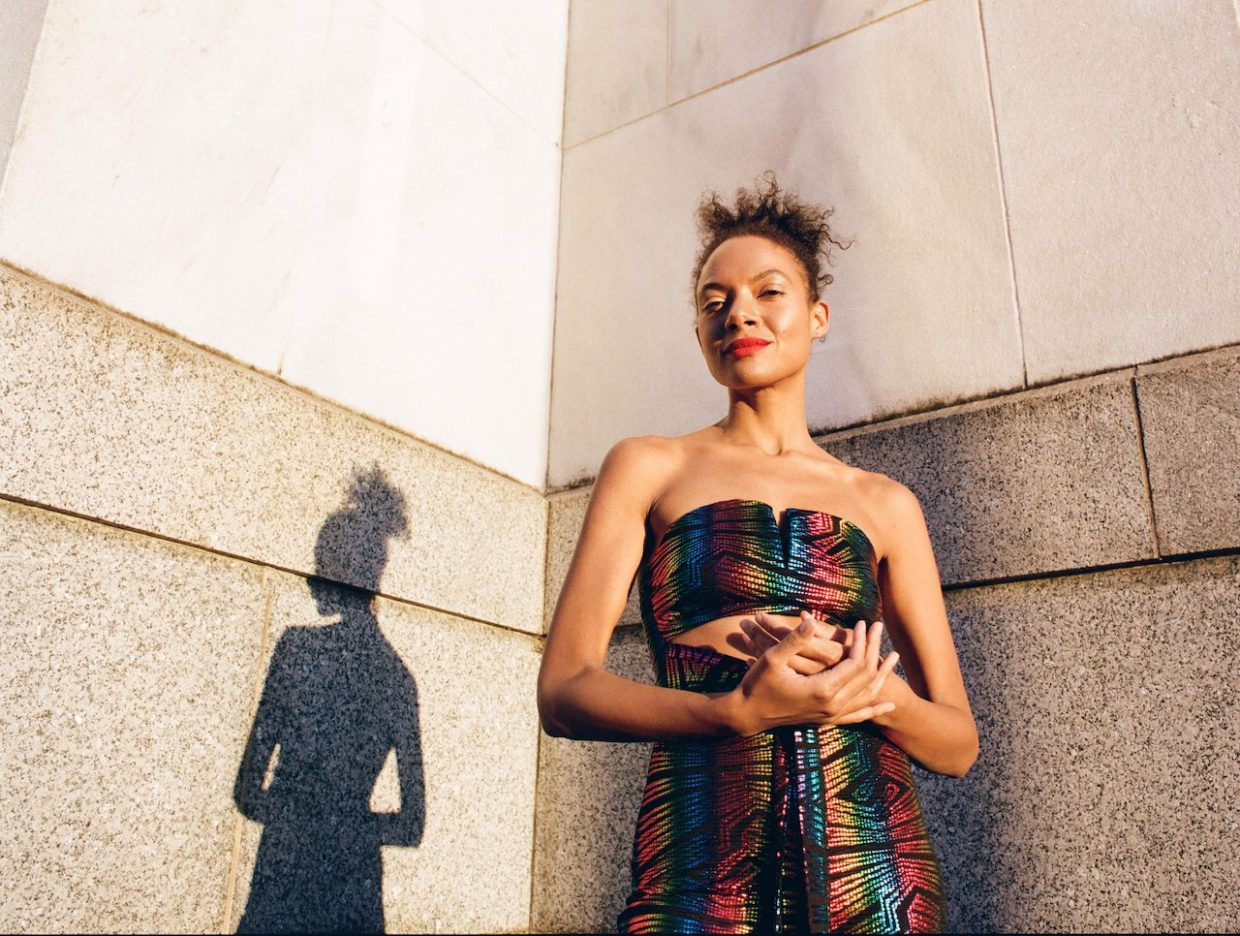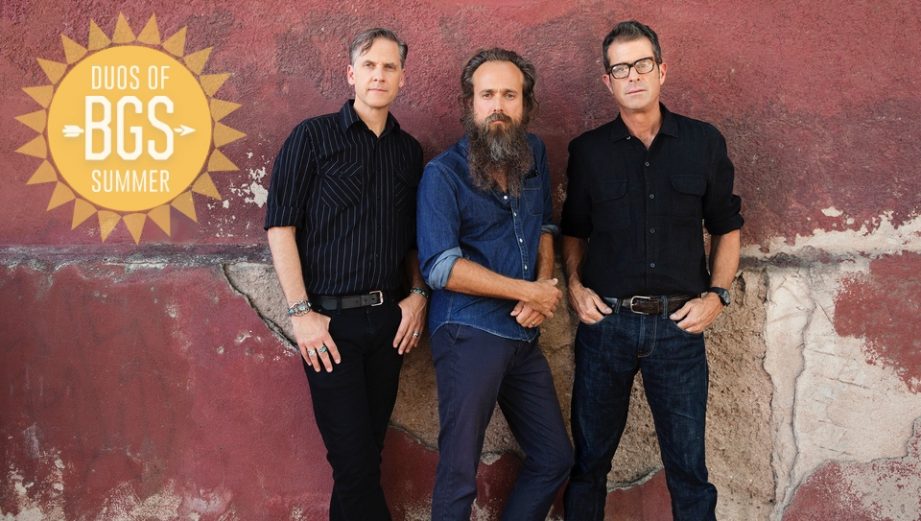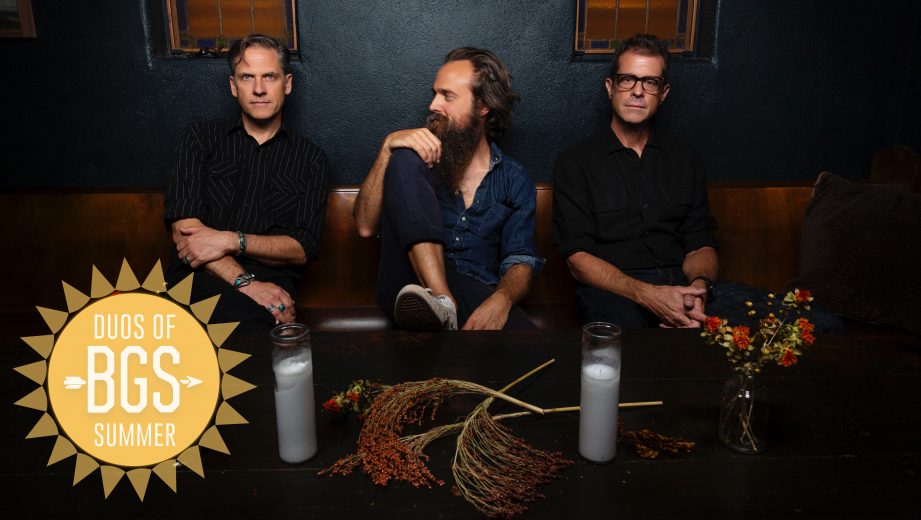We’ve reached the end of the week and we’ve got your new music covered this Friday! Our premiere round-up is completely full with excellent new songs and videos from a variety of artists who work in a variety of roots styles.
Check out new music videos from folks like singer-songwriter Sadie Campbell performing “Getting Older,” a subtly spooky tune from High Horse entitled “Tombstone Territory,” country outfit Loose Cattle bring us “The Shoals,” on which they are joined by none other than Patterson Hood, and “Afro-Appalachian” artist Mon Rovîa’s lyric video for “Winter Wash 24” is colorful and engaging.
You’ll also find brand new music from folks like JD Clayton, who sings about being disappointed by a friend on “Let You Down,” Benny Sidelinger processes a difficult season of life on “Lilacs,” and roots rockers Clarence Tilton call on their pal Marty Stuart for their latest, “Fred’s Colt.”
To cap it all, we debuted our new video series, the AEA Sessions, with our partners at AEA Ribbon Mics earlier this week with an incredible performance by our longtime friend, Gaby Moreno. You can watch that debut session below, as well.
It’s all right here on BGS and, you know the routine – You Gotta Hear This!
Sadie Campbell, “Getting Older”
Artist: Sadie Campbell
Hometown: British Columbia-raised, Nashville-based
Song: “Getting Older”
Album: Metamorphosis
Release Date: October 11, 2024 (single); October 25, 2024 (album)
Label: Glory War Records
In Their Words: “In a sea of filters, fillers, and constant pressure to look young, ‘Getting Older’ is my reminder to embrace myself where I am, as I am, to be proud of every wrinkle on my face, that my body was well-earned through laughter and learning, and not everyone gets the privilege to grow older. This video is meant to symbolize the many different versions we can be throughout our lives — and that it’s really about perspective. The photo can be the same, but through a different lens, you see a different image. Just like how we see ourselves. If we can change the lens, and the way we perceive ourselves, the picture we see often changes, too.” – Sadie Campbell
Video Credits: Filmed and edited by Justin Alexis at That Good Graphic.
JD Clayton, “Let You Down”
Artist: JD Clayton
Hometown: Fort Smith, Arkansas
Song: “Let You Down”
Release Date: October 11, 2024
Label: Rounder Records
In Their Words: “‘Let You Down’ was born in a coffee shop in East Nashville called Cafe Roze. I sat next to a new friend who would later become my bass player. We had an itch to hit the town and get dinner at an unfamiliar restaurant, but to our surprise every establishment the waitress recommended was closed that day. After about the fourth restaurant it became a humorous bit. It immediately began pouring rain outside. Although the waitress meant nothing by it, I teased that she was letting us down. On my drive home that day I sang ‘sometimes people let you down’ in my voice memo. It immediately hit me and I was flooded with feelings of an old friend that had actually let me down and meant it. I then had my sweet little song. But it needed more. It wasn’t until the day of recording that I dreamed up a huge instrumental break to highlight all of my band members and bring their skills to life. On a Thursday at Sound Emporium studio on Belmont Boulevard, my band cut ‘Let You Down’ and it became in my own humble opinion a certified banger. I’m certainly biased, but I truly love the song and its flow of story to emotionally charged musical outrage.” – JD Clayton
Track Credits:
Written by JD Clayton.
JD Clayton – Vocals, acoustic guitar, background vocals, harmonica
Bo Aleman – Electric guitar
Lee Williams – Bass guitar
Kirby Bland – Drums, percussion
Hank Long – Piano, Wurlitzer, organ
High Horse, “Tombstone Territory”
Artist: High Horse
Hometown: Boston, Massachusetts
Song: “Tombstone Territory”
In Their Words: “After coming off tour with the Jacob Jolliff Band, I had all this inspiration that I wanted to bring to a High Horse instrumental composition. The basic elements of ‘Tombstone’ come from some of the ideas in Jolliff’s music and influence from Grant Gordy/Mr. Sun recordings. And, from a practice of sending around a melodic part that I learned in an earlier Persian Music Ensemble at NEC to the band. Not only was this an academic sort of exploration for me, but it was also a great opportunity to show off some of the special skills everyone in the band has as instrumentalists. Some of my favorite solos on the record happen on this recording and it has some of our best band cohesion! After performing the piece for one of its first times in Hancock, New Hampshire we were still looking for a title when we happened upon a short dirt road named Tombstone Territory. Given the spooky vibe of the tune, that seemed to fit just perfectly!” – G Rockwell, composer, guitarist
Track Credits:
G Rockwell – Guitar
Carson McHaney – Fiddle
Karl Henry – Cello
Noah Harrington – Bass
Video Credits: Video, editing, recording, and mixing by Micah Nicol
Loose Cattle, “The Shoals” featuring Patterson Hood
Artist: Loose Cattle
Hometown: New Orleans, Louisiana
Song: “The Shoals”
Album: Someone’s Monster
Release Date: October 8, 2024 (single); November 1, 2024 (album)
Label: Single Lock Records
In Their Words:“‘The Shoals’ gives me faith good men are actually listening, since Michael pulled the lyrics from several years of my private ‘Mad As Hell/Not Gonna Take It Anymore’ rants. It’s a song about what happens when we stop twisting into pretzels trying to please everyone else and start speaking uncomfortable truths to power. Historically, there’s a long tradition of accusing women who speak uncomfortable truths aloud of possession or witchcraft, so it felt especially fitting to cast Patterson Hood as a river ‘demon’ egging on the narrator.” – Kimberly Kaye
“I started writing the song during my first stay in the Shoals some years ago, on a banged up old guitar I’d just bought there. Better writers than me have tried and failed to explain the mysterious way that stretch of the Tennessee River has sung so much unforgettable music into being. All I can say is the song kind of wrote itself there and I just tried to copy it down. And ever since, from having an original Swamper’s son tell me “hell yeah” that he wanted to sing the part of a River Demon for us, to finding the record the perfect home at Single Lock Records, has just seemed meant to be. After a hell of a lot of work, of course.” – Michael Cerveris
Track Credits:
Music and lyrics by Michael Cerveris.
Kimberly Kaye – Vocals
Michael Cerveris – Acoustic and electric guitars, harmonies
René Coman – Bass
Doug Garrison – Drums
Rurik Nunan – Fiddle, harmonies
Jay Gonzalez – Farfisa organ
Patterson Hood – Vocals, guitar
Mon Rovîa, “Winter Wash 24”
Artist: Mon Rovîa
Hometown: Liberia-born, Tennessee-based
Song: “Winter Wash 24”
Album: Act 4: Atonement
Release Date: October 11, 2024 (single); January 10, 2025 (EP)
Label: Nettwerk Music Group
In Their Words: “I wrote ‘Winter Wash 24’ while touring with Josiah and the Bonnevilles in March ’24. The theme of cognitive dissonance weighed heavily on my mind amidst everything happening in the world. Outside Seattle, I saw tanks covered in tarps treated with winter wash and the image moved me to write. The song explores how we often distance ourselves from the struggles of others when they don’t directly affect us. My goal is to raise awareness of these shared struggles, because empathy is a crucial force for change. As a refugee, I’m deeply inspired by the work of the IRC (International Rescue Committee) and am donating the song’s proceeds to support their vital efforts.” – Mon Rovîa
Benny Sidelinger, “Lilacs”
Artist: Benny Sidelinger
Hometown: Wayne, Maine (famous for a bumper sticker that says “Where the hell is Wayne, ME?”)
Song: “Lilacs”
Album: Cherry Street
Release Date: October 25, 2024
In Their Words: “I wrote ‘Lilacs’ during a particularly difficult period of my life. However, there were many joyous things happening at the time too. My then-fiancée was pregnant with our lovely daughter Tulsi and we were living in a gorgeous historical farmhouse on the Skagit River, yet I was dealing with the aftermath of a difficult divorce and was temporarily isolated from my two older kids. The juxtaposition of tragedy and joy during that time are the basis of the song. For a while, I thought I might lose my mind, but somehow I managed to hold on to a thread of sanity. Eventually I was reunited with my kids and moved on to much easier chapters of life. At the same time, we had a spring with an incredible amount of rain and there was concern that the river might overflow the dikes, which would have flooded our house. Yet, just as I managed to not go crazy, the dikes held and a catastrophic flood was avoided. So, as they say: ‘I wrote a song about it.'” – Benny Sidelinger
Track Credits:
Benny Sidelinger – Vocals, guitar, Dobro
Michael Thomas Connolly – Bass, telecaster, vocals
Aida Miller – Vocals
Jason Haugland – Drums
Clarence Tilton, “Fred’s Colt” featuring Marty Stuart
Artist: Clarence Tilton
Hometown: Omaha, Nebraska
Song: “Fred’s Colt” featuring Marty Stuart
Album: Queen of the Brawl
Release Date: October 11, 2024 (single)
In Their Words: “We asked Marty to get involved with ‘Fred’s Colt’ as we had met and opened for him a couple times in our hometown, [Omaha]. Marty agreed and played his famous pull-string telecaster, the original guitar of Clarence White of the Byrds. It’s a guitar we were well acquainted with, as we are huge Clarence White fans. Marty’s voice seemed perfect for the second verse of this song, which recounts the potentially sordid history of a strange family heirloom – an old Civil War-era Colt pistol. Marty not only lent us his voice for a verse and his guitar wizardry for a solo, but even added parts throughout that we did not realize were missing. Marty Stuart is a national treasure, and we are so honored and excited that he spent a day with our tune and did what only he can do!”
Track Credits:
Words and music by Chris Weber.
Chris Weber – Rhythm electric guitar, acoustic guitar intro, vocals
Marty Stuart – Electric guitar (Telecaster), first solo, second verse vocals
Corey Weber – Electric guitar throughout, second solo
Paul Novak – Acoustic guitar
Craig Meier – Bass
Jarron Storm – Drums, percussion, vocals
AEA Sessions: Gaby Moreno, Live at AmericanaFest 2024
Artist: Gaby Moreno
Hometown: Los Angeles, California
Songs: “New Dawn,” “Solid Ground,” and “Luna de Xelajú”
In Their Words: “It was a wonderful experience performing a few songs for AEA at Bell Tone during AmericanaFest. The sound quality and the energy in the room were unforgettable.” – Gaby Moreno
“Gaby is charismatic and energetic. She lights up a room when she walks in and when she performs, it’s electrifying.”
– Julie Tan, AEA Ribbon Mics
Photo Credit: Mon Rovîa by Glenn Ross; Loose Cattle by Joseph Vidrine.
